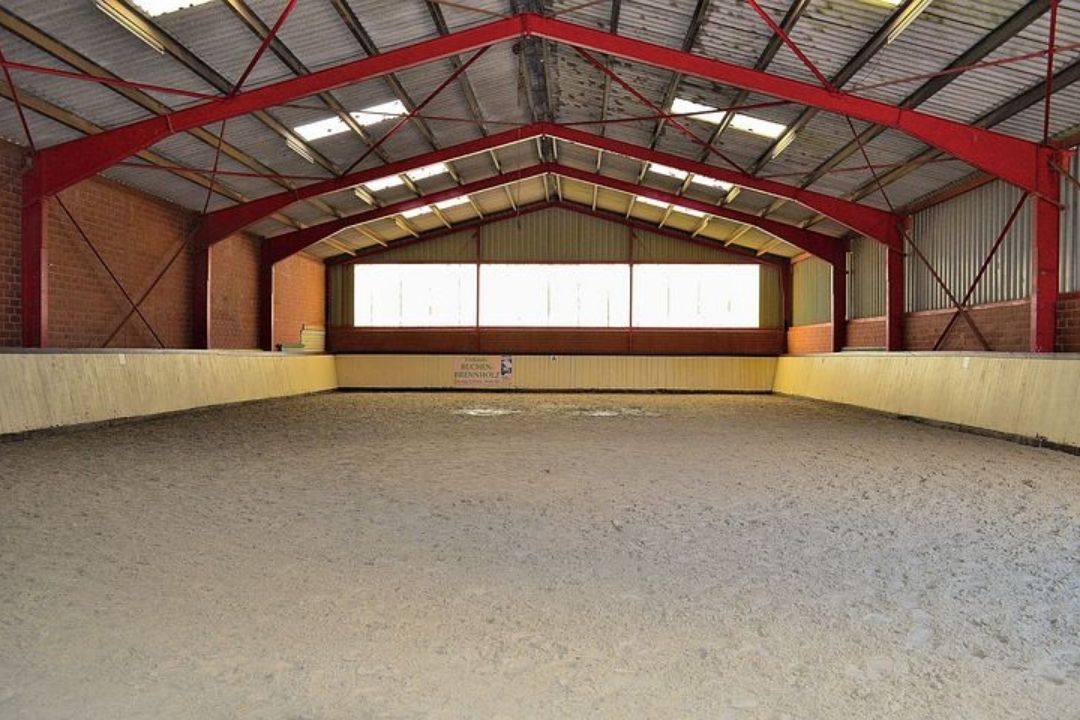
Common Horse Terms You Should Know
Horse terminology is vital to understand if you want any clue of what is being said in and around the yard. What’s more is that it can be greatly beneficial if you know the correct horse terms when performing certain tasks and can save you a lot of time. In addition, having a wealth of knowledge when it comes to the equestrian industry can have many countless benefits, not only for yourself, but for your horse. For example, if your horse happened to sustain an injury on their hock, would you know where to look? As such, we have detailed common horse terms you should know as an experienced or perhaps beginner equestrian rider.
Hand
To start our list of common horse terms we have the phrase ‘hand’. Hand is the measuring unit horse riders use when determining how tall (or small) their horse is. One hand is equivalent to 10 cm or 4 inches. The horse’s height is measured at the highest point of its withers, which is located right between the shoulder blades of the horse. The tallest horse ever recorded was the Shire Gelding, Sampson, back in 1846 which came in at a whopping 21.25 hands.
Rail
The fence, wall or outer barrier of the equestrian arena is typically referred to as the rail. It is essentially the perimeter of the area where you exercise or train your horse. Having adequate space when riding your horse is essential. The standard dimensions of an equestrian is 20m x 40m however a larger space is always beneficial. Any smaller would make practising dressage tests, schooling or jumping difficult, especially on a young or green horse.
Mucking Out
Mucking out is a weird horse term given to clean out your horse’s stable. If your horse is stabled during any part of the day, you’ll have to keep it clean. Unclean stables attract insects, promote foul odours and can encourage hoof problems, such as thrush. In addition, breathing ammonia from urine-saturated bedding can be harmful to your horse’s sensitive lungs. This can result in poorer exercise performance during their training day. Not to mention, failure to muck out can leave unpleasant smells for you too so always make sure you conduct this practice daily.
Soft hands
Effective riders can communicate with their horses in a variety of ways. One of which is by using the horse term ‘soft hands’. This task is essentially the ability to keep your hands, which are directly attached, through the reins, to the bit inside the horse’s mouth, soft and forgiving. This is particularly useful when steering, stopping or providing the horse a cue that involves the reins. Riders that are able to perform this task are able to achieve a more accepting horse who will be more responsive to commands. Perfect for dressage competitions.
Quiet Leg
Quiet leg is very similar to soft hands but is referencing a rider’s legs specifically. A rider with a quiet leg will often have legs that move very subtly, and will only squeeze pressure around the horse to provide a cue of some sort. A rider that moves their leg a lot while on the horse is likely to inadvertently kick the horse and potentially confuse the horse.
Shorten or Loosen Your Rein
The rein is what the rider holds in their hands and is directly attached to a bit in the horse’s mouth. This serves as a direct line of communication between a horse and the rider’s hands. The length of rein refers to the amount of rein between the rider’s hands and the horse’s mouth. Depending on the task, the rein length can vary which can be detailed below:
Shortening the reins would mean the rider decreases the amount of rein between their hands and the horse’s mouth. Shortening the reins can help riders establish a steady contact with their horse’s mouth, but even when shortening the reins, the contact should remain light and soft.
If the rider should need to loosen the reins, they will move their hands slightly down the reins away from the horse’s mouth. This is done to decrease the amount of pressure on a horse’s mouth and allow more freedom of movement, particularly in the horse’s head and helps them relax.
Groundwork
Groundwork is an interesting horse term and refers to working and building the relationship foundations with your horse while unmounted. Many training concepts are first introduced to horses and riders through effective groundwork. It is crucial that a horse, especially for beginner level riders, has excellent ground manners to reduce the risks and danger of groundwork. A further benefit of effective groundwork is that it allows your horse to flourish and express their personality so that they can be confident, well behaved and trusting of you when you wish to ride them.
To conclude, we have disclosed some common horse terms that you should know as a beginner or elite level equestrian rider. If you are interested in horse arenas or any of our products here at Combi Ride, why not get in touch with us at:
Email – sales@combi-ride.co.uk
Phone – 01623 239 875

